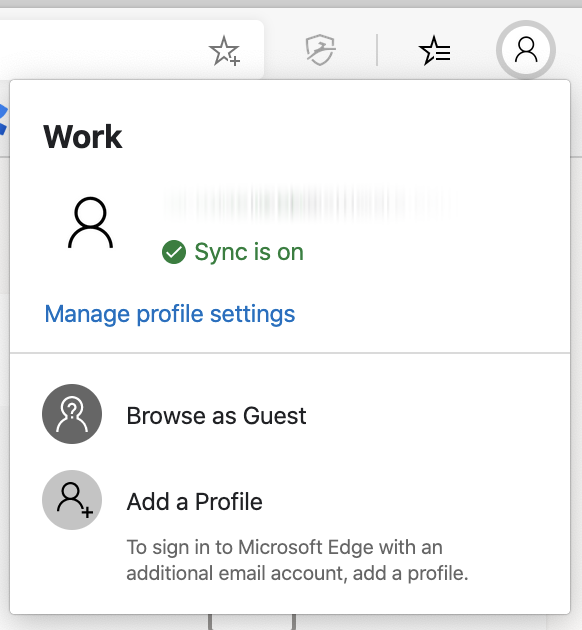The case for Edge on OSX & Linux
Ever since Microsoft Edge was leaked for OSX, I’ve used it. Not exclusively, however as a UI Architect it’s both my job and my hobby to keep an eye on the landscape. I’ve certainly gotten a lot of flack for it – both from friends and coworkers – however when presented with my reasoning, they all agree that it makes sense (though it’s often not for them).
The reasoning is simple: I can keep my work browsing separate from my personal browsing. It all comes down to this:

That’s right, sync. Edge uses Office365’s IdP and, especially in large corporations, that usually means you get a seamless sync experience sandboxed to your work. Additionally, Edge’s integration with Office365 is surprisingly useful, revealing my direct colleagues’ docs activities so I can keep up to date on what’s moving on my team.
It’s certainly not perfect – operating systems still only permit only one default browser, so opening links can sometimes be a bear as I copy-paste furiously between Chromium and Edge (I’m looking at you, Slack). Lastly, it’s certainly not useful if you’re working in a Google Apps environment.
Furthermore, as someone who loves his unit and functional testing, having a karma launcher that works on OSX would be lovely; not to mention a selenium-enabled docker image. Yet even without those, it’s already crossed my own Threshold of Usefulness™️.
But wait, what about Firefox? Well, Firefox now stands alone in the browser wars as the only Not-Chromium browser with major market share. As someone who works daily on user interfaces, I will naturally default to the experience that most of my customers do.